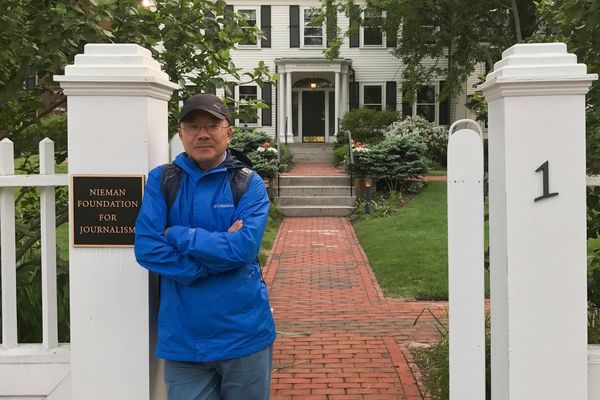Southwest Victoria's Budj Bim cultural landscape hosts a complex system of channels, weirs and dams internationally recognised by UNESCO as the largest and oldest aquaculture network in the world.
Here, at Tae Rak (Lake Condah), its wetland swamps and the lava flows from the inactive Budj Bim volcano, the Gunditjmara people have harvested kooyang, or short-finned eel, for more than six millennia.
The traps diverted water from the lake into holding ponds, which were naturally formed lava sinkholes.
Now, traditional owners are being given a greater say in the water management of the area.
Budj Bim world heritage Ranger Tyson Lovett-Murray remembers when his uncles would show him these wetlands as a kid.
"My uncles would refer to these systems as fridges, where you could store your food," he says.
"They were known to fill up with hundreds to thousands of eels – and other freshwater fish — in these sink holes and feed big mob.
"All the cultural values here are tied to water."
Years ago, the channels dried up and these traditional practices stopped when mass farming and irrigation drained the wetlands to make way for settler activity such as stock grazing.
But a commitment by the state government to return 2.5 gigalitres of unallocated water from the Palawarra system to the the Gunditj Mirring Traditional Owners Aboriginal Corporation (GMTOAC) will mean the Gunditjmara community's connections to the traditional practice of kooyang farming can be guaranteed for future generations.
"Forty years ago, as a traditional owner group we had very little access to Country," Mr Rose, the program manager at GMTOAC says.
"Our ancestors engineered this multitude of channels and weirs and farmed fish for many thousands of years.
"This push to recognise our rights in the water space is really important and welcomed."
Water integral to cultural practice
Gunditjmara man Denis Rose says water is a big part of his culture.
"The Country sustained us. I grew up eating lots of eel," he says from Tae Rak.
"I used to go fishing with my father and uncles … it was great to go and catch a few eels, but the really important thing was about us listening to their stories."
The allocation is part of a new road map unveiled by the Victorian government called Water Is Life.
Regional development minister Harriet Shing says the document will use approaches such as fee waivers to hand back water rights to traditional owners.
"This is an Australian first and I hope, not an Australian last," she says.
"I'm really sorry we haven't got to this point sooner."
Fight for water over
Gunditjmara man Damein Bell says the area's traditional owners have been fighting to reinstate water in the lake since 2002.
"They'd say, 'Where will you get the allocation from?' And we'd say, 'From our ancestors, where'd you get yours from?'" he says.
"Our elders had to fight tooth-and-nail to get what we have today.
"Today we have the Water Is Life road map, so we don't have to fight as hard anymore."
The state government has committed to invest $3.35 million over two years to deliver Water Is Life.
It said the project will not impact irrigators' water entitlements or allocations, nor will they have to pay any extra charges.







